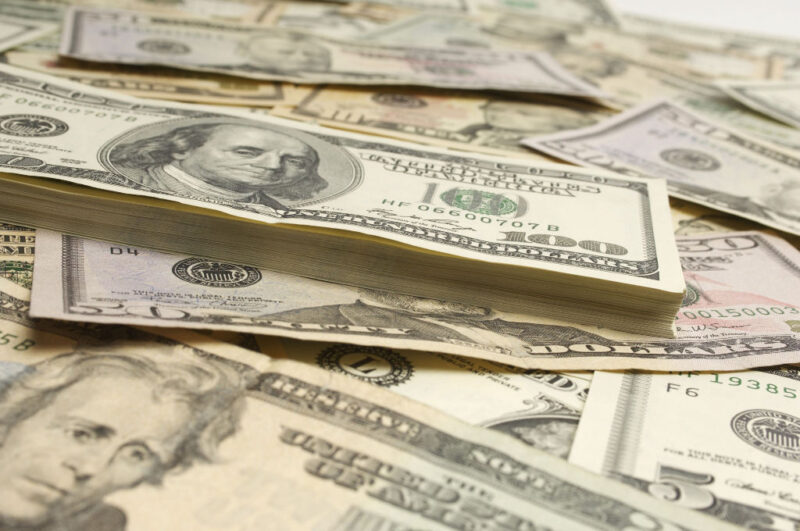Yesterday we exposed the truth about the plunging pound. It’s actually bobbing about on the surface of its trade-weighted index – a measure of the currencies in which we trade. And the US dollar is what’s on the move, against almost all currencies. But what are the consequences of a rising US dollar?
Well, you can read the news, can’t you? But you’ve probably stopped, after the last two and a half years…
And that’s especially helpful in this case. Because the topic doesn’t lend itself to one-sided analysis.
You see, economics has a long list of chicken-and-egg problems. But because economics is so convoluted and vague, the debate has an added dimension. It’s not just whether the chicken or egg came first, it’s whether the chicken caused the egg to be there, or the egg caused the chicken to be there.
And so the debates about minimum wages and unemployment, stimulus and GDP growth, inflation and QE, and all the rest, go on ad infinitum without ever being settled. That would leave a lot of economists out of work…
The warning “correlation is not causation” argues that, just because eggs and chickens are obviously linked doesn’t mean they create each other. You have to explain things a little better than simply observing the fact that they seem to occur in the same places and at the same times. You need a theory, not just facts.
One of the debates that I’ve never managed to untangle is whether a rising US dollar causes financial market and economic crises, or whether such crises cause the US dollar to rip. But they’re definitely correlated – the US dollar rises when there’s a crash in markets.
Back in 2007, stockbroker Peter Schiff was busy warning everyone about sub-prime debt and the imminent financial crisis that unfolded. I don’t think many people did it quite as well as he did, partly because he appeared to have a limitless capacity for being ridiculed on TV.
The thing is, it’s my understanding that Schiff’s clients didn’t do so well during the crash he predicted. Since he expected the US dollar to plunge in value as the US financial crisis unfolded, he recommended his clients hold foreign investments.
But, as the crisis began, the US dollar soared in value, as it has during crises for many decades now. This meant Shiff’s clients lost money on the exchange rate.
Now, I don’t know for sure that’s true. And it’s probably not true for all his clients, given that he’s more of a stockbroker than a fund manager. But, even if I’m wrong about Schiff’s actual advice and what happened to his clients, the point remains the same: in a crisis, even one that originates in the United States, the US dollar soars in value.
Today, that’s happening again, and it’s causing chaos in financial markets.
Why does it occur? Because the greenback provides a refuge for most investors – politically, financially and in terms of available assets.
So when a crisis hits, we see a flight to safety over to the US currency, which bids up its value on foreign exchange markets.
Or maybe it’s just a self-fulfilling prophecy at this point, as it has been true for so long. Either way, it’s true so far in 2022. As the markets crashed (or is it because the markets crashed?), the US dollar surged.
The other consequences of a rising US dollar are tricky, too. Consider that the price of everything, including investments, is ultimately measured in US dollars. That’s because it’s the global reserve currency.
When people buy things on international markets, they use US dollars. When they compare prices internationally, they use US dollars. When a Danish policeman buys Cuban cigars from a German, they use US dollars. Unless the US government stops them and confiscates the money, despite having nothing to do with the transaction…
The point is that the US dollar plays a partially hidden role in every single price and transaction in the world. It is the global yardstick, even if you’re not using it every day.
So, when the US dollar rises in value, it impacts everything. It makes everything more expensive to those of us who aren’t American. And it makes international things cheaper for Americans.
This is a nightmare for those nations which are reliant on imports of things such as energy, which is priced in US dollars and must be bought and paid for in US dollars, for the most part. But it’s quite good for energy exporters such as [redacted] that can earn lots of dollars by selling their energy.
These days, you can’t write anything without mentioning inflation, so here goes…
The US dollar’s rise is also causing a lot of inflation around the world by making imports more expensive for nations. That’s why so many prodigious exporters have seen their trade balances reverse. They are paying exorbitant prices just to get the US dollars they need to then pay for oil and gas, which are also rising in price.
In the US, inflation is getting a headwind from the rising US dollar, which is part of the reason why the US inflation rate is not as high anymore.
The overall point of all this is that, even if the cause/effect relationship of the US dollar’s rise during plunging asset markets is hard to pin down, some of the other consequences of its increase are straightforward. And they’re not good.
I wonder (in my newsletter Gold Stock Fortunes) what governments and central banks might do about it…

Nick Hubble
Editor, Fortune & Freedom
PS Yesterday at 4pm, Sam Volkering went live with his new crypto broadcast. We may be just days away from what could be the most important moment in crypto history. So be prepared to act decisively. Find out what Sam has to say here.




